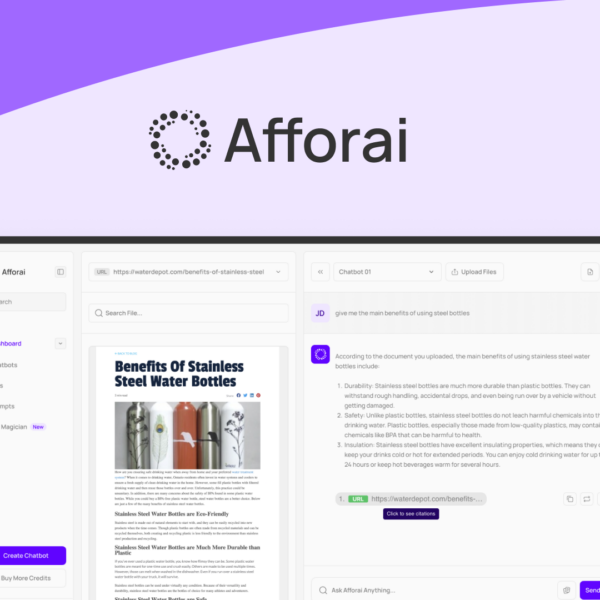Looking to invest in SaaS products? You’re in the right place! Finding the perfect lifetime deals can be tricky, but these tips will light the way.
Research the Developer and Company
When you’re considering a lifetime deal, it’s important to research the developer and company. This will help you understand who you’re buying from and their track record. Look for companies that have been in business for a while. A long history usually means they’re more reliable.
Check their website for clear information about their products. Is it easy to find details? If not, that might be a red flag. A good company will have support options like email, chat, or phone.
Read User Reviews
User reviews are gold mines. They show real experiences from real users. Look for comments about the product’s performance and customer support. Are people happy with the service? Do they mention any problems?
Look for Transparency
Transparency is key. The company should be upfront about pricing and what’s included in the deal. Watch out for hidden fees or unclear terms. Make sure you know what you’re getting.
Also, see if they have a blog or resources. This shows they’re active in keeping their customers informed. Companies that share knowledge are usually trustworthy.
Consider Their Community Presence
Is the company active on social media? Engaging with customers online is a good sign. Join forums or groups related to their products and see what others say. This can give you great insights.
Evaluate Recently Rolled-Out Features

When choosing a lifetime deal, it’s vital to evaluate recently rolled-out features. New features can improve how the software works. They can make your life easier and help your business grow.
Start by checking the list of new features. Companies often share updates on their websites or in newsletters. This is where you can find out what’s recent.
Ask About Updates
Don’t be shy! Reach out to the company and ask how often they roll out new features. Regular updates mean they’re focused on improving their product.
Read the Release Notes
Release notes give details about what’s new. They explain how features work and their benefits. Reading these can help you understand if the upgrades meet your needs.
Look for User Feedback
User feedback can tell you a lot. Check forums or social media to see what others think about the new features. Do they like them? Are there complaints?
This feedback can help you decide if the latest updates are worth your investment. Also, see if users are getting value from these new tools.
Review the Product Roadmap
Reviewing the product roadmap is crucial when considering a lifetime deal. A product roadmap shows what features and updates the company plans to add in the future. This insight can help you decide if the software will meet your needs long-term.
Start by asking the company for their roadmap. A good company will be happy to share it with you. Look for clear timelines and the types of features they have planned.
Understand Upcoming Features
Check if the planned features align with your goals. Do you see anything that could improve your workflow? If the roadmap includes tools that excite you, that’s a positive sign.
Assess the Company’s Focus
The roadmap can reveal what the company values. If they focus on user feedback, that’s great! It shows they care about enhancing user experience.
Watch for Priorities
Pay attention to the priority level of features. Some may be marked as high priority, while others are lower. This can give you a clue about what to expect first.
Finally, a well-planned roadmap indicates a thoughtful approach. If a company is organized about their future, it often means they’re reliable in the present.
Engage with Their Customer Support

Engaging with customer support is a smart move before you commit to a lifetime deal. Strong customer support can make or break your experience with a software product. It’s important to know they’ll be there for you if you need help.
Start by reaching out with questions. Ask about their response times and support options. Do they offer live chat, email, or phone support? This shows they care about helping users.
Test Their Responsiveness
Get a feel for their responsiveness. Send an email or use their chat feature. Pay attention to how quickly they reply and how helpful their responses are. This can be a game changer for you.
Check Their Knowledge Base
A well-organized knowledge base is a great sign. This lets you find answers without direct contact. Look for tutorials, FAQs, and guides. These resources can make your experience smoother.
Look for User Feedback
User feedback about customer support can provide valuable insights. Search online for reviews discussing support quality. See if users mention positive or negative experiences.
A company that values customer support will ensure you’re well taken care of. This boosts your confidence in the product you’re considering.
Assess Current or Future Needs
When considering a lifetime deal, it’s important to assess current or future needs. This means thinking about what you need now and what you might need later. Planning ahead can help you choose the right software.
Start by listing your current tasks. What problems do you face? For example, do you need better organization or communication tools? Knowing this helps in selecting the right features.
Think About Future Growth
Consider where your business is headed. Are you planning to hire more people or expand services? Choose software that can grow with you. This avoids the hassle of switching tools later.
Prioritize Essential Features
Focus on the features that matter most to your work. Not all tools are equal. Make a list of must-haves versus nice-to-haves. This keeps your decision clear and focused.
Gather Input from Your Team
If you have a team, ask for their input. They can provide insights on what they need to be effective. Involving them in the decision can lead to better choices.
By assessing your needs now and in the future, you’ll make a smarter investment. It ensures that the software you choose will fit your business for years to come.




